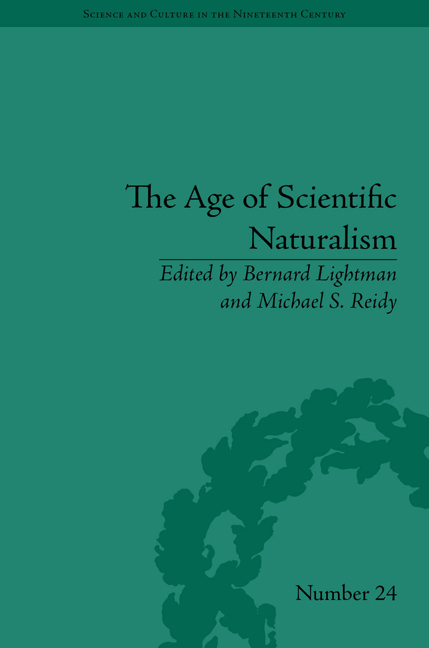Book contents
- Frontmatter
- CONTENTS
- Dedication
- Acknowledgements
- List of Contributors
- List of Figures
- Introduction: John Tyndall, Scientific Naturalism and Modes of Communication
- Part I John Tyndall
- Part II Scientific Naturalism
- Part III Communicating Science
- 8 Corresponding Naturalists
- 9 Tyndall and Stokes: Correspondence, Referee Reports and the Physical Sciences in Victorian Britain
- 10 Science at the Metaphysical Society: Defining Knowledge in the 1870s
- Notes
- Index
10 - Science at the Metaphysical Society: Defining Knowledge in the 1870s
from Part III - Communicating Science
- Frontmatter
- CONTENTS
- Dedication
- Acknowledgements
- List of Contributors
- List of Figures
- Introduction: John Tyndall, Scientific Naturalism and Modes of Communication
- Part I John Tyndall
- Part II Scientific Naturalism
- Part III Communicating Science
- 8 Corresponding Naturalists
- 9 Tyndall and Stokes: Correspondence, Referee Reports and the Physical Sciences in Victorian Britain
- 10 Science at the Metaphysical Society: Defining Knowledge in the 1870s
- Notes
- Index
Summary
In 1877 William Allingham, a poet with connections to the Pre-Raphaelite school of painters and writers, then editor of Fraser's Magazine, wrote a piece for his own journal under the pseudonym of Unus de Multis that blasted the‘Creed of the Future’ as promulgated by ‘Modern Prophets’. Though this new creed had ‘not yet been put into any formal shape’, Allingham believed that it would be tantamount to atheistic materialism. Science, Allingham complained, was sweeping away all religious faith. For the modern prophets, among whom he included scientists such as T. H. Huxley, John Tyndall and W. K. Clifford, grounded their obnoxious creed on the assumption that ‘physical science is competent to deal with the total contents of human experience; the truth being that these our Prophets translate every experience into materialistic formulae’. In the past, atheism could only be found ‘skulking’ in a ‘cheap newspaper and dingy discussion hall’. For the first time in the history of modern civilization, Allingham warned, ‘ATHEISM is publicly and authoritatively inculcated’ in ‘schools, classes, lectures to working-men, lectures to the fashionable world, Sunday afternoon discourses, “lay-sermons” of all sorts, books and periodicals addressed to people of every rank and every degree of culture’. But what bothered Allingham even more than the unprecedented public expression of atheism was the lack of any strong reaction against it.
- Type
- Chapter
- Information
- The Age of Scientific NaturalismTyndall and his Contemporaries, pp. 187 - 206Publisher: Pickering & ChattoFirst published in: 2014



